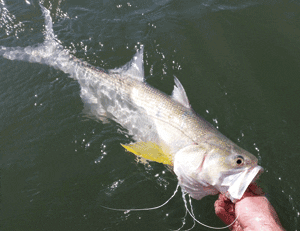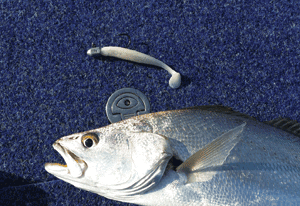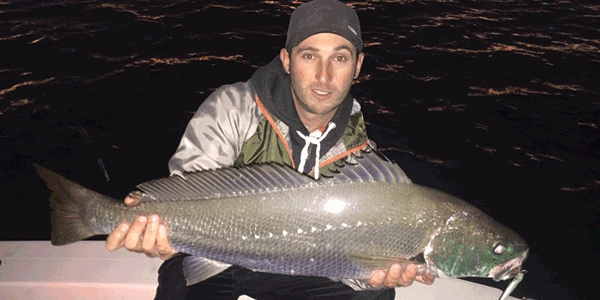Moreton Bay
The next two months can be a great time to target a number of species in Moreton Bay. Jewfish can be found in a variety of places throughout the bay, sometimes in large numbers. Finding these fish and being in the right place at the right stage of the tide is the key to success.
Around the tide change jewfish can move onto some of the deeper water structures that may be affected by too much current during the main stage of the tide. Smaller tides can be fishable for longer and larger tides can have short but productive bite periods, so make the most of your opportunities.
Jewfish can bite during the entirety of the tide but will often move around, so anglers may have to be mobile to stay with the fish. Using a lure with enough weight to get to the fish is the most important thing, and sometimes a lure with a subtle action is necessary while other times an aggressive action gets the best results.
Estuary cod is another species worth a look as the water warms. Cod like to hang around any large, solid structure, both in the deep and shallows. The many beacons around the bay can hold estuary cod in varying sizes, some of which are unstoppable on lure casting tackle.
Again, focusing on smaller tides or the change of tide and using heavier lures can see more fish hooked.
These cod can be difficult to stop around solid structure because once hooked they usually head straight back in and cut your line.



Jumpinpin and Broad-water
Flathead will be an extremely popular target throughout Jumpinpin and the Broadwater during October because they are generally in good numbers and heaps of big girls are usually about. So far this flathead season, the reports are small hard-bodies such as Zerek Tango Shads have caught lots of flatties in the shallows.
As the season progresses, the flathead usually become active in the deeper water too, and heavier sinking lures worked slowly while maintaining plenty of contact with the bottom are often successful. Jewfish will be about in the deeper water as well, and for those who target them with lures, this is often the time to get a larger-sized fish.
Excellent numbers of smaller fish are around at the moment, so hopefully this continues and a few larger fish start chewing as well. I have had good success using Jackall Transams along with O.S.P and Z-Man soft plastics while targeting fish located on my Lowrance sounder.
These fish have been holding in fairly shallow water, and surprisingly, several threadfin salmon have been mixed in with them. It has been good to see threadfin salmon moving throughout our systems in Brisbane and the Gold Coast area.
I would like to see the bag limit of threadfin salmon reduced to say one or two fish in these southern waters (currently five throughout Queensland with a minimum size of 60cm). There has been a fairly big push from some recreational fishers to stop netting of this species in certain areas, which is a great thing.
Fresh water
The beginning of September marked the opening of the Australian bass season in Queensland tidal systems once again.
Excellent numbers of bass are available in just about every river and creek in southeast Queensland. We are really lucky to have such a great fishery with so many options of different systems in which to catch these fantastic sportfish.
Canoes and kayaks are perfect vessels for getting into the skinny rivers and creeks as the bass push up the systems at this time of year. Hungry from their winter spawning run, bass will be hunting small fish, shrimp and all sorts of insects, giving anglers a large range of lure types to try to tempt a bass to eat.
Most passionate bass anglers will prefer to catch bass on surface lures because bass exhilarate us with their surface smashes. Popular surface lures are small cup-face poppers, crawlers such as the Tiemco Soft Shell Cicada and my favourite the O.S.P Orikanemushi.
This little topwater lure can be cast into places other lures cannot go and its subtle popping action and lifelike look and feel make it irresistible to wild Aussie bass. On the dam scene, big bass have been firing in Somerset, Hinze and Kurwongbah dams.
Targeting schools located on the sounder and cycling through lures and techniques until a pattern is found is the way to get into serious numbers of these large bass. Tailspinners, soft vibes, blades and jig head-rigged soft plastics are all worth a try when targeting either suspended fish or those holding on the bottom.
Small variations in retrieve and lure colour can make a huge difference at times because bass can be very fussy about what presentation they will eat.
 Bush ‘n Beach Fishing Magazine Location reports & tips for fishing, boating, camping, kayaking, 4WDing in Queensland and Northern NSW
Bush ‘n Beach Fishing Magazine Location reports & tips for fishing, boating, camping, kayaking, 4WDing in Queensland and Northern NSW









